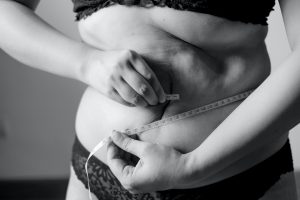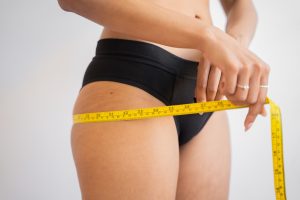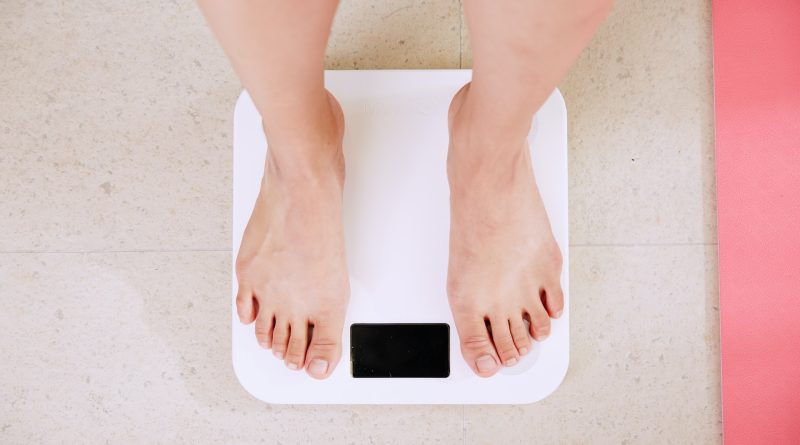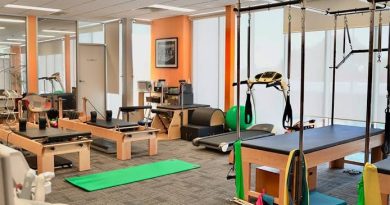Benefits of Progress Photos with the Keto Diet
Are you following the keto diet but finding it challenging to track your progress? Have you hit a plateau and unsure how to proceed? Taking progress photos is an excellent way to monitor your progress, stay motivated, and identify areas that may need adjustment. In this article, we will explore the benefits of progress photos and provide tips on how to take them effectively.
What are Progress Photos?
Progress photos are a series of pictures taken over time to document changes in your body, particularly in terms of weight loss and muscle gain. They are a visual representation of your progress, making it easier to see changes that may not be noticeable on the scale. Progress photos can be taken in various poses, clothing, and angles to provide an accurate representation of your body.
To take progress photos, you need a camera, a tripod or a stable surface to rest your camera, and good lighting. It’s recommended to take progress photos every four weeks to monitor your progress accurately. The best thing you will end up with is that amazing before and after photo for keto inspiration for you, your friends and anyone who wants to follow your successful weight loss.
The psychology of seeing weight loss progress
The psychology of seeing diet progress is essential when following the keto diet. Here are some key points to keep in mind:
- Visual cues:
Progress photos provide visual cues that can help you stay motivated when following the keto diet. Seeing the changes in your body over time can be a powerful motivator to keep going.
- Positive reinforcement:
Seeing progress can reinforce positive behaviours, such as sticking to your diet and exercise routine. This positive feedback can help you feel more confident and committed to your goals.
- Self-efficacy:
Seeing progress can increase your self-efficacy, which is your belief in your ability to succeed. As you see changes in your body, you may feel more confident in your ability to stick to the diet and reach your goals.
- Comparison:
Progress photos can help you compare your current self to your past self, rather than comparing yourself to others. This can help you feel more positive about your progress and avoid feeling discouraged by comparing yourself to others.
- Goal setting:
Seeing progress can help you set new goals for yourself, such as increasing your workout intensity or trying new recipes. This can help you stay engaged with the diet and avoid becoming complacent.
In summary, the psychology of seeing progress is crucial for staying motivated and committed when following the keto diet. By using progress photos to track your progress, you can reinforce positive behaviours, increase your self-efficacy, and set new goals for yourself.

Benefits of Progress Photos with the Keto Diet
- Tracking Your Progress
Taking progress photos is an excellent way to track your progress on the keto diet. Unlike the scale, progress photos provide a visual representation of your body’s changes, making it easier to see progress over time. By taking regular progress photos, you can monitor your progress and adjust your diet and exercise routine accordingly.
- Motivation
Taking progress photos can be highly motivating, especially when you can see visible changes in your body. When you’re struggling to stay motivated, progress photos can serve as a reminder of how far you’ve come and inspire you to continue making progress.
- Accountability
Taking progress photos can help keep you accountable for your diet and exercise routine. Knowing that you’ll be taking photos every few weeks can motivate you to stick to your diet and exercise routine, as you want to see positive changes in your body.
- Identifying Plateaus
Plateaus are common when following the keto diet, and progress photos can help you identify them. If you notice that your progress photos aren’t changing, despite following the diet and exercise routine, it may be time to make adjustments to your routine.
- Making Adjustments
Progress photos can help you identify areas that need improvement and make adjustments to your diet and exercise routine accordingly. For example, if you notice that your progress photos show little muscle gain, you may need to incorporate strength training into your routine.
Tips for Taking Progress Photos
Taking progress photos can be daunting, but with these tips, you can take effective progress photos:
- Clothing
Wear tight-fitting clothing to show off your body’s changes accurately. Avoid baggy clothing, as it can make it difficult to see changes in your body.
- Lighting
Good lighting is crucial for taking progress photos. Natural light is the best, so try taking photos near a window. If you’re taking photos indoors, ensure that the lighting is even and not too harsh or too dim.
- Consistency
Take photos in the same location, at the same time of day, and with the same camera and settings every time. This consistency will ensure that your progress photos are accurate and provide a clear comparison over time.
- Angle
Take photos from the same angle each time to provide a consistent comparison. A full-body photo from the front, side, and back is recommended.
- Time of Day
Take photos at the same time of day to ensure consistent lighting and avoid bloating that can occur throughout the day.

How to adjust your diet if you’re not liking what you see in your progress photos
Taking progress photos can be a great tool to track your progress on the keto diet, but what should you do if you’re not happy with what you see in your photos? Here are some tips on how to adjust your diet to help you achieve your desired results:
- Re-evaluate your calorie intake:
If you’re not seeing any changes in your progress photos, it could be because you’re not in a calorie deficit. To lose weight, you need to consume fewer calories than your body burns. Use a calorie tracking app to monitor your calorie intake and adjust accordingly.
- Check your macros:
On the keto diet, it’s important to consume the right balance of macronutrients, which are fats, protein, and carbohydrates. If you’re not seeing any changes in your progress photos, you may need to adjust your macros. Increase your protein intake and decrease your fat intake to help promote muscle growth and fat loss.
- Incorporate more whole foods:
While the keto diet allows for some processed foods, it’s important to prioritize whole, nutrient-dense foods. If you’re not seeing any changes in your progress photos, you may need to incorporate more whole foods into your diet. Focus on foods like vegetables, fruits, lean proteins, and healthy fats.
- Reduce your carb intake:
On the keto diet, you need to keep your carb intake low to stay in a state of ketosis. If you’re not seeing any changes in your progress photos, you may need to reduce your carb intake even further. Aim for fewer than 20 grams of net carbs per day to help promote fat loss.
- Increase your activity level:
Exercise is an essential part of any weight loss journey. If you’re not seeing any changes in your progress photos, you may need to increase your activity level. Incorporate strength training and cardio into your routine to help promote muscle growth and fat loss.
- Consider intermittent fasting:
Intermittent fasting is a popular method for promoting weight loss. If you’re not seeing any changes in your progress photos, you may want to consider incorporating intermittent fasting into your routine. Start with a 16:8 fasting schedule, which involves fasting for 16 hours and eating within an eight-hour window.
- Be patient:
Weight loss takes time, and it’s important to be patient with yourself. Don’t get discouraged if you’re not seeing the results you want in your progress photos. Stay consistent with your diet and exercise routine, and the results will come.
In conclusion, progress photos can be a great tool to help you track your progress on the keto diet. If you’re not happy with what you see in your photos, there are several adjustments you can make to your diet to help promote weight loss and muscle gain. Remember to be patient and consistent, and the results will come.
Targeting problem areas with exercise on keto

The keto diet can be an effective way to lose weight and improve overall health, but sometimes, despite your best efforts, you may still struggle with problem areas. These areas may be stubborn to lose fat or may require extra attention to build muscle. Fortunately, exercise can help target these problem areas and give you the results you desire. In this article, we will explore some tips for targeting problem areas with exercise while following the keto diet.
Identify Your Problem Areas:
The first step in targeting problem areas with exercise is to identify which areas you want to focus on. This may be different for everyone, but common problem areas include the belly, thighs, arms, and back. Once you have identified your problem areas, you can choose exercises that specifically target those areas.
- Incorporate Strength Training:
Strength training is an excellent way to target problem areas and build muscle. By incorporating strength training into your exercise routine, you can tone your problem areas and improve your overall body composition. Some effective strength training exercises include squats, lunges, push-ups, and pull-ups.
- Add Cardiovascular Exercise
Cardiovascular exercise is essential for burning calories and improving overall health. By incorporating cardio into your exercise routine, you can increase your calorie burn and target problem areas. Some effective cardio exercises include running, cycling, swimming, and HIIT workouts.
- Try Compound Exercises
Compound exercises are exercises that work multiple muscle groups at once. By incorporating compound exercises into your routine, you can target multiple problem areas simultaneously. Some effective compound exercises include burpees, deadlifts, and kettlebell swings.
- Focus on Proper Form
Regardless of which exercises you choose, it’s essential to focus on proper form to prevent injury and maximize results. Proper form ensures that you are targeting the correct muscles and avoiding unnecessary strain on your joints. Consider hiring a personal trainer or taking a fitness class to learn proper form.
- Consider Bodyweight Exercises
Bodyweight exercises are exercises that use your body weight as resistance, making them an excellent option for those who prefer to exercise at home. Bodyweight exercises can be effective for targeting problem areas, and they require no equipment. Some effective bodyweight exercises include push-ups, squats, lunges, and planks.
- Be Consistent
Consistency is key when it comes to targeting problem areas with exercise. You should aim to exercise at least three times a week, focusing on your problem areas during each workout. By consistently targeting your problem areas with exercise, you can see results over time.
- Be Patient
Targeting problem areas with exercise takes time and patience. It’s important to remember that results may not happen overnight, but with consistency and dedication, you can achieve your goals. Don’t get discouraged if you don’t see immediate results, and remember that progress is progress, no matter how small.
Conclusion
Taking progress photos is an excellent way to track your progress, stay motivated, and hold yourself accountable when following the keto diet. By following these tips, you can take accurate and effective progress photos that accurately document your progress over time.
FAQs
- How often should I take progress photos?
It’s recommended to take progress photos every four weeks to accurately monitor your progress.
- What should I wear for progress photos?
Wear tight-fitting clothing to accurately show off your body’s changes.
- What type of camera should I use for progress photos?
Any camera with a timer or remote control can be used for progress photos, but a DSLR or mirrorless camera will provide the best quality.
- Can I take progress photos without a tripod?
Yes, progress photos can be taken without a tripod, but a stable surface to rest your camera is recommended for consistency.
- How long should I wait before expecting to see changes in my progress photos?
It can take several weeks to notice changes in your progress photos, but this varies depending on the individual and their diet and exercise routine.



